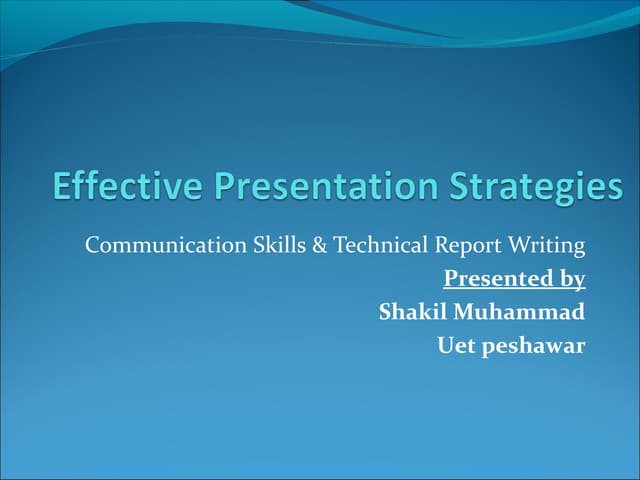What are the 10 Qualities of a Good Presentation?
The 10 qualities of a good presentation include creativity, self-confidence, storytelling, active listening, knowledge, using visual aids, engaging the audience, body language, eye contact, and the use of a clear and impactful human voice. In today’s competitive business world, being able to deliver a good presentation is a valuable skill that can set you apart and leave a lasting impression on your audience.
Whether you’re pitching a new product, presenting a report, or delivering a speech, a good presentation requires certain qualities to ensure its effectiveness. One of the key qualities of a good presentation is creativity. Being able to think outside the box and present information in an engaging and unique way can capture the attention of your audience and make your presentation memorable.
Additionally, self-confidence plays a crucial role in delivering a successful presentation. Confidence in your abilities and in the content you’re presenting helps to establish credibility and build trust with your audience. Storytelling is another important quality of a good presentation. Using narratives, examples, and anecdotes can help to create a connection with your audience and make your message more relatable and memorable. Active listening is also essential, as it allows you to understand the needs and interests of your audience, tailor your presentation accordingly, and respond to questions or feedback effectively. Having in-depth knowledge of the topic you’re presenting is crucial for a good presentation. Being well-informed and prepared not only enhances your credibility but also allows you to provide valuable insights and answer questions confidently. In addition, the use of visual aids such as charts, graphs, and images can enhance the clarity and impact of your presentation. Engaging the audience through interactive activities, asking questions, or involving them in discussions can create a dynamic and memorable experience. Body language and eye contact are important non-verbal communication cues that can convey confidence, attentiveness, and sincerity. Maintaining eye contact with your audience helps to establish a connection and keeps them engaged throughout the presentation. Finally, using a clear and impactful human voice is essential for effective communication. Speaking clearly, using appropriate volume and tone, and utilizing pauses for emphasis can enhance the delivery of your message and make it more compelling. A good presentation requires a combination of creativity, self-confidence, storytelling, active listening, knowledge, visual aids, engaging the audience, body language, eye contact, and a clear and impactful human voice. By incorporating these qualities into your presentations, you can deliver a memorable and impactful message that resonates with your audience.
Introduction To Good Presentations
Good presentation skills encompass qualities such as creativity, self-confidence, storytelling, learning, knowledge, active listening, body language, eye contact, and a clear and confident human voice. Incorporating these qualities can help deliver a powerful and impactful presentation that captivates the audience.
Importance Of Delivering A Good Presentation
Delivering a good presentation is essential for effectively conveying information and ideas to an audience. Whether you are presenting in a professional setting, academic environment, or any other context, a good presentation can make a significant impact. Here are some reasons highlighting the importance of delivering a good presentation:
- Engages the Audience: A well-delivered presentation captures the attention of the audience and keeps them engaged throughout. It creates a connection between the presenter and the listeners, facilitating better understanding and retention of the information presented.
- Builds Credibility: A good presentation showcases the presenter’s knowledge and expertise on the subject matter. It helps establish credibility and trust among the audience, making them more receptive to the ideas shared.
- Enhances Comprehension: An effective presentation utilizes visual aids, storytelling techniques, and clear explanations to simplify complex information. This ensures that the message is easily understood by the audience, increasing their comprehension and learning.
- Influences Decision Making: A well-structured presentation has the power to influence the audience’s opinions, attitudes, and decisions. It can motivate them to take action, support a cause, adopt new ideas, or make informed choices.
- Demonstrates Professionalism: Delivering a good presentation showcases professionalism and competence. It reflects positively on the presenter’s abilities and can lead to increased opportunities for career advancement and personal growth.
- Fosters Effective Communication: Presentations provide a platform for effective communication between the presenter and the audience. Through verbal and non-verbal cues, a good presentation facilitates the exchange of ideas, encourages dialogue, and promotes understanding.
- Saves Time: Well-organized presentations help convey information efficiently, saving time for both the presenter and the audience. It allows for the dissemination of key points concisely and effectively, cutting down on unnecessary repetition or confusion.
- Inspires and Motivates: An impactful presentation has the potential to inspire and motivate the audience. It can ignite their passion, spark creativity, and encourage them to think critically and innovatively.
- Generates Interest and Attention: A good presentation captures the interest and attention of the audience from the beginning. It makes use of captivating visuals, compelling storytelling techniques, and interactive elements to create an engaging and memorable experience.
- Leaves a Lasting Impression: A well-delivered presentation leaves a lasting impression on the audience. It ensures that the key messages and takeaways are remembered long after the presentation has ended.
Remember, delivering a good presentation requires careful planning, preparation, and effective delivery techniques. With the right qualities and approach, you can create presentations that captivate, inform, and inspire your audience.

Credit: www.pbcexpo.com.au
1. Clear And Concise Structure
A good presentation should have a clear and concise structure, with each point presented in a brief and easily understandable manner. This ensures that the audience can follow along and easily grasp the key information being presented.
Organizing The Presentation Logically:
A good presentation should have a clear and concise structure that allows the audience to follow along easily. The organization of the content plays a crucial role in delivering a successful presentation. Here are some key points to consider when organizing your presentation:
- Clearly outlining the main points: Start by introducing the main points or topics you will cover in your presentation. This provides a roadmap for your audience and helps them understand what to expect.
- Using effective transitions between sections: Use transitional phrases or sentences to smoothly move from one point to another. This helps maintain the flow of your presentation and keeps the audience engaged.
- Breaking down the content into sections: Divide your presentation into logical sections to make it easier for the audience to digest the information. Each section should focus on a specific aspect or topic related to your main points.
Remember, a well-organized presentation helps the audience follow the flow of your ideas and enhances their understanding of the topic. So, take the time to structure your presentation in a logical and coherent manner.
2. Engaging Visuals
Engaging visuals play a crucial role in a good presentation. They capture the audience’s attention, enhance understanding, and make the presentation more memorable.
Utilizing Relevant And High-Quality Images, Graphs, And Charts:
Effective presentations can greatly benefit from the use of engaging visuals. By incorporating relevant and high-quality images, graphs, and charts, presenters can enhance their message, capture the audience’s attention, and make complex information easier to understand. Here are some key points to consider:
- Utilize relevant visuals: Choose images, graphs, and charts that directly support the main points of your presentation. Avoid using generic or unrelated visuals that may confuse or distract your audience.
- Use high-quality visuals: Ensure that your visuals are clear, crisp, and visually appealing. Low-quality or pixelated visuals can detract from the overall professionalism of your presentation.
- Enhance understanding: Visuals are a powerful tool for conveying information quickly and effectively. Use graphs and charts to present data in a visually appealing and easily digestible format.
- Use variety: Mix up the types of visuals you use throughout your presentation to maintain interest and engagement. Incorporate images, graphs, charts, and other visual elements to keep your audience visually stimulated.
Remember, visuals should complement and enhance your presentation, not overshadow it. Use visuals strategically to reinforce your key points and make a lasting impact on your audience.
Avoiding Excessive Text On Slides:
One common mistake presenters make is overcrowding their slides with excessive text. This can overwhelm the audience and make it difficult for them to focus on the key message. To create an engaging and visually appealing presentation, follow these guidelines:
- Keep it concise: Limit the amount of text on each slide to a few key points or short phrases. Avoid long paragraphs or walls of text that may be difficult for the audience to read and absorb.
- Use bullet points: Organize your information into bullet points to make it easier for the audience to follow along. This also helps break up the text and make it more visually appealing.
- Use visuals to support text: Instead of relying solely on text, use visuals such as images or icons to convey your message. Visuals can often communicate information more effectively than text alone.
- Utilize white space: Leave ample white space on each slide to create a clean and uncluttered design. This helps focus the audience’s attention on the key points and prevents the slides from appearing overwhelming.
By avoiding excessive text on slides, you allow your audience to focus on your spoken words and create a more engaging and memorable presentation experience.
3. Effective Communication
Effective communication is crucial in delivering a good presentation. Some qualities to consider include knowing your audience, using visual aids, storytelling, engaging your audience, and effectively handling questions and feedback. Mastering these skills can help you deliver a powerful and impactful presentation.
Speaking Clearly And Confidently:
- Use a Clear and Articulate Voice: Speaking clearly involves enunciating your words and using an appropriate volume. Make sure your voice is audible to all members of the audience.
- Avoid Speaking Too Fast: Speaking at a moderate pace allows your audience to understand and process your message effectively.
- Use Appropriate Intonation: Varying your tone and pitch can help convey emotions and add emphasis to key points.
- Be Confident: Confidence in your delivery helps captivate and engage your audience. Practice your presentation beforehand to build your confidence.
Maintaining Eye Contact With The Audience:
- Establish Connection: Maintaining eye contact with your audience helps create a connection and establishes trust. Look at various audience members, avoiding focusing on just one person.
- Show Genuine Interest: Eye contact shows that you are engaged with your audience and value their presence. It helps to keep them attentive and interested in what you have to say.
- Convey Confidence and Authority: When you maintain eye contact, you appear more confident and authoritative, which enhances your credibility as a presenter.
Using Appropriate Body Language And Gestures:
- Open Posture: Maintain an open posture, with your arms relaxed by your side or gesturing naturally. This conveys approachability and invites audience involvement.
- Use Hand Gestures: Appropriate hand gestures can enhance your message and make it more engaging. Use them sparingly and purposefully to emphasize key points.
- Facial Expressions: Your facial expressions should align with the content of your presentation. Display enthusiasm, concern, or excitement when appropriate, as it helps to convey your message effectively.
- Move Purposefully: Avoid excessive movement or fidgeting, but do not remain stationary. Moving purposefully around the stage can help keep the audience engaged and make your presentation dynamic.
Remember, effective communication is essential for delivering a successful presentation. By speaking clearly and confidently, maintaining eye contact, and using appropriate body language and gestures, you can captivate your audience and effectively convey your message.
4. Relevant Content
A good presentation should have relevant content that is tailored to the audience’s needs and interests. By providing information that is valuable and applicable, the presenter can effectively engage the audience and leave a lasting impression.
Aligning The Presentation Content With The Audience’S Needs And Interests:
- Understand the target audience: Research and analyze the audience demographics, interests, and needs to ensure that the presentation content aligns with their preferences.
- Tailor the message: Customize the presentation content to resonate with the audience’s specific interests and concerns. Use language and examples that they can relate to.
- Identify key points: Prioritize and focus on the most relevant information that directly addresses the audience’s needs. Avoid unnecessary details or tangents.
- Grab attention from the start: Start the presentation with a hook that immediately captures the audience’s interest and establishes the relevance of the content.
Providing Valuable And Actionable Information:
- Offer relevant insights: Share valuable information and insights that are directly applicable to the audience’s work or personal lives. Provide actionable tips, strategies, or techniques that can be implemented after the presentation.
- Use examples and case studies: Illustrate key points with real-life examples and case studies to make the information more relatable and tangible for the audience.
- Support with data and research: Cite credible sources and incorporate data and research findings to back up your claims and enhance the overall credibility of the information presented.
- Simplify complex concepts: Break down complex ideas into easily understandable and digestible chunks. Use visual aids such as charts, graphs, or diagrams to simplify complex data.
Offering Solutions To The Audience’S Problems Or Concerns:
- Address pain points: Identify the common problems or concerns that the audience may face and provide practical solutions or suggestions to help them overcome these challenges.
- Demonstrate value: Emphasize how your presentation can directly benefit the audience by solving their problems, fulfilling their needs, or addressing their concerns.
- Showcase success stories: Share success stories or testimonials from individuals or organizations that have applied the presented solutions, highlighting the positive outcomes achieved.
- Encourage interaction: Allow opportunities for the audience to ask questions, share their experiences, or engage in discussions related to the presented solutions. Foster a collaborative and interactive environment.
5. Engaging Opening
An engaging opening is one of the 10 qualities of a good presentation. It captures the audience’s attention and sets the tone for the rest of the presentation.
Capturing The Audience’S Attention From The Start
A good presentation starts with an engaging opening that captivates the audience from the very beginning. Here are some effective strategies to capture the audience’s attention:
- Using a compelling story: Begin with a story that relates to the topic of your presentation. Stories have a way of connecting with people on an emotional level and can instantly grab their attention.
- Presenting a shocking statistic: Start with a surprising statistic that highlights the importance or relevance of your topic. This can make the audience sit up and take notice.
- Quoting an influential figure: Begin with a powerful quote from a well-known person that resonates with your topic. Quotes can inspire and intrigue the audience, making them curious to learn more.
The main goal is to establish the relevance and importance of the topic right from the start, ensuring that the audience is fully engaged and eager to hear what you have to say.
6. Interactive Elements
One quality of a good presentation is incorporating interactive elements, such as polls, quizzes, or live demonstrations, to actively engage the audience and make the presentation more dynamic and memorable. These elements encourage audience participation and interaction, creating a more interactive and engaging experience.
Encouraging Audience Participation Through Questions, Polls, Or Activities:
- Incorporating interactive elements in a presentation is essential for engaging the audience and making them active participants in the learning process.
- Ask thought-provoking questions that encourage the audience to think critically and share their opinions.
- Conduct live polls or surveys to gather instant feedback and involve the audience in decision-making during the presentation.
- Include activities or exercises that allow the audience to apply the concepts being discussed and interact with one another.
- By involving the audience in the presentation, you create a more dynamic and memorable experience that encourages active learning.
Incorporating Multimedia Elements Such As Videos Or Live Demonstrations:
- Use videos to provide visual demonstrations, showcase examples, or share testimonials that support the content of your presentation.
- Incorporate live demonstrations to provide a real-time experience and show the practical application of the concepts being discussed.
- Multimedia elements add variety to the presentation and help to break up the monotony of slides or text.
- Videos and live demonstrations can be powerful tools for capturing the audience’s attention and enhancing their understanding of the topic.
- Ensure that the multimedia elements used are relevant, high-quality, and seamlessly integrated into the presentation.
Creating Opportunities For Discussion Or Group Exercises:
- Foster a collaborative learning environment by providing opportunities for the audience to engage in discussions related to the presentation topic.
- Divide the audience into smaller groups and assign them exercises or discussions that require them to apply the information presented.
- Encourage active participation by setting clear guidelines for group discussions and providing prompts or questions to guide the conversation.
- Allocate time for each group to share their insights or solutions with the larger audience, promoting knowledge sharing and a deeper understanding of the topic.
- Group exercises help to create a sense of community and enable participants to learn from one another’s perspectives.
Remember, interactive elements in a presentation enhance audience engagement, make the content more memorable, and promote active learning. Incorporating multimedia elements and creating opportunities for discussion or group exercises will result in a more impactful presentation.
7. Well-Prepared Delivery
A well-prepared delivery is one of the 10 qualities of a good presentation. It involves knowing your audience, using visual aids, engaging your audience, and handling questions and feedback effectively. With these skills, you can deliver a powerful and impactful presentation that leaves a lasting impression.
Well-Prepared Delivery
A good presentation not only depends on the content and slides, but also on the delivery. A well-prepared delivery ensures that the presenter effectively communicates their message and engages the audience. Here are some key qualities of a well-prepared delivery:
- Practicing the presentation multiple times: Practicing helps the presenter become more familiar with the flow of the presentation and ensures a smoother delivery. It allows them to identify areas for improvement and make necessary changes before the actual presentation.
- Familiarizing oneself with the content and slides: A presenter should thoroughly understand the content and be familiar with the slides. This helps in delivering the presentation confidently and clearly conveying the key points.
- Being prepared to handle unexpected situations or technical difficulties: Presentations can encounter unexpected situations, such as interruptions or technical difficulties. A good presenter is prepared to handle such situations calmly and efficiently, without losing focus or composure.
Overall, a well-prepared delivery demonstrates professionalism and enhances the effectiveness of a presentation. It allows the presenter to connect with the audience, hold their attention, and effectively convey the intended message. By practicing the presentation multiple times, familiarizing oneself with the content and slides, and being prepared to handle unexpected situations or technical difficulties, presenters can deliver an impactful presentation.
8. Adaptability To The Audience
Adaptability to the audience is one of the 10 qualities of a good presentation. By understanding the needs and preferences of the audience, a presenter can tailor their content, language, and delivery to effectively engage and connect with their listeners.
Tailoring The Presentation To Suit The Audience’S Knowledge And Background
When delivering a presentation, it’s crucial to adapt and tailor the content to suit the audience’s knowledge and background. By doing so, you can effectively engage them and ensure that they understand and connect with the information being presented. Here are some key ways to achieve adaptability to the audience:
- Assess the audience: Before the presentation, take the time to research and understand your audience. Consider their demographics, education level, professional background, and any specific interests or preferences they may have.
- Use language and terminology they understand: Avoid jargon, technical terms, or industry-specific language that may confuse or alienate the audience. Instead, use plain language that is easily accessible and relatable to them.
- Provide relevant examples: Use relatable examples that resonate with the audience’s experiences or interests. This can help them understand complex concepts or ideas by providing real-world context.
- Address specific concerns or questions: Anticipate and address the audience’s specific concerns or questions throughout the presentation. This shows that you value their input and are actively interested in meeting their needs.
- Encourage interaction: Engage the audience by encouraging questions, discussions, or participation during the presentation. This fosters a sense of inclusion and creates a more dynamic and interactive environment.
- Adapt the pace and level of detail: Gauge the audience’s level of knowledge and adjust the pace and depth of the presentation accordingly. Avoid overwhelming them with excessive information or speaking at a level that is too basic for their understanding.
- Consider cultural and diversity factors: Be mindful of cultural sensitivities, diversity, and inclusivity when tailoring your presentation. Avoid assumptions or stereotypes that may inadvertently exclude or offend certain audience members.
- Personalize the content: Whenever possible, customize the presentation to include examples or references that are relevant to the audience’s industry, company, or individual roles. This demonstrates your effort to make the content meaningful and applicable to their specific context.
- Adapt visuals and media: Use visuals, images, and media that resonate with the audience and enhance their understanding. Consider their preferences and visual learning styles when selecting and designing presentation materials.
- Seek feedback: After the presentation, seek feedback from the audience to assess their understanding and satisfaction. This can help you further refine and improve your adaptability to different audiences in the future.
By tailoring your presentation to suit the audience’s knowledge and background, you can create a more engaging and impactful experience for them. Remember to be flexible and responsive throughout the presentation, ensuring that the content remains relevant and accessible to everyone in attendance.
9. Effective Use Of Time
Delivering a good presentation requires effective use of time. By knowing your audience, using visual aids, and engaging your audience, you can ensure that your presentation is concise, engaging, and impactful.
Managing The Presentation Within The Allocated Time Frame:
- Start by understanding the time limit for your presentation and plan accordingly.
- Break down your content into sections based on the time available for each.
- Practice timing your presentation to ensure you stay within the allocated time frame.
- Use visual aids or slides to help you keep track of time and pace your delivery.
- Be mindful of your speaking speed and avoid rushing through the presentation.
- Rehearse transitions between sections to maintain a smooth flow without wasting time.
- Consider using a timer or clock visible to you to stay aware of the time remaining.
- Adjust your content in real-time if you notice you’re running out of time, focusing on the most crucial points.
- Stay flexible and be prepared to adapt if unexpected circumstances occur.
Prioritizing And Emphasizing Key Points:
- Identify the key message or main objective of your presentation.
- Structure your content to highlight these key points effectively.
- Use repetition and emphasis techniques to reinforce important information.
- Consider using visual aids or infographics to make key points more memorable.
- Use clear and concise language to ensure the audience understands the main ideas.
- Consider using storytelling or real-life examples to illustrate key points.
- Practice emphasizing critical points with your voice and body language.
- Avoid overwhelming the audience with too much information and prioritize the most relevant points.
Allowing Sufficient Time For Questions And Discussion:
- Allocate a specific portion of your presentation for questions and discussion.
- Signal the availability for questions throughout the presentation.
- Pause after presenting each section to allow the audience to process and ask questions.
- Be attentive and actively listen to the questions asked by the audience.
- Encourage participation by creating a safe and inclusive environment for discussion.
- Allocate enough time for each question to be fully addressed.
- Clarify any potential misunderstandings and provide further explanations if needed.
- Summarize and reiterate key points discussed during the Q&A session.
- If time is limited, suggest alternative ways for the audience to reach out with further questions or follow-up.
Remember, managing time effectively, prioritizing key points, and allowing for questions and discussion are critical aspects of delivering a good presentation. By following these guidelines, you can engage your audience and ensure a successful presentation.
10. Conclusion With A Call To Action
Deliver a powerful and impactful presentation by incorporating these 10 qualities: creativity, self-confidence, storytelling, continuous learning, knowledge of the subject matter, good presentation skills, active listening, body language, eye contact, and a clear and confident voice. Wow your audience with these essential skills.
Summarizing The Main Points And Key Takeaways
- A good presentation should leave the audience with a clear understanding of the main points and key takeaways.
- It should effectively summarize the information presented and highlight the most important aspects.
- By providing a concise recap, the audience can easily remember and recall the main points after the presentation.
- Summarizing the main points and key takeaways helps reinforce the message and ensures that the audience’s comprehension is retained.
Inspiring The Audience To Take Action Or Consider The Presented Ideas
- A good presentation should not only inform but also inspire the audience to take action or consider the ideas presented.
- It should motivate the audience to think differently, challenge their existing beliefs, or adopt new behaviors.
- By presenting compelling arguments and real-life examples, the speaker can ignite a desire within the audience to take action.
- Inspiring the audience to act or consider the presented ideas is crucial for the success and impact of the presentation.
Providing Clear Next Steps Or Resources For Further Engagement
- After delivering a powerful presentation, it is important to provide the audience with clear next steps or resources for further engagement.
- This could include recommending relevant books, articles, or websites for additional learning.
- The speaker can also encourage the audience to participate in follow-up activities, such as workshops, webinars, or discussions.
- By providing clear next steps or resources, the audience can continue their journey of exploration and learning beyond the presentation.
A good presentation should be summarized to ensure the audience retains the main points. It should also inspire the audience to take action or consider the presented ideas by presenting compelling arguments and real-life examples. Additionally, providing clear next steps or resources for further engagement allows the audience to continue their learning journey.
By following these qualities, speakers can deliver impactful presentations that leave a lasting impression on the audience.
Frequently Asked Questions
What Are 7 Presentation Skills?
Presentation skills are important for delivering a powerful and impactful presentation. The 7 key skills include knowing your audience, storytelling, using visual aids, body language, voice and tone, engaging your audience, and handling questions and feedback.
What Are Qualities Of Good Presentation?
Qualities of a good presentation include creativity, self-confidence, storytelling, active listening, body language, eye contact, and engaging the audience.
What Are The 5 Essential Skills For Making A Successful Presentation?
The 5 essential skills for making a successful presentation include knowing your audience, storytelling, using visual aids, body language, and engaging your audience.
What Are The 6 Requirements For An Effective Presentation?
The 6 requirements for an effective presentation are: 1. Clear and concise content 2. Engaging delivery 3. Well-structured organization 4. Appropriate visuals and multimedia 5. Audience interaction and engagement 6. Effective communication skills
Conclusion
To deliver a good presentation, several key qualities are necessary. First and foremost, a good presenter must be creative, finding unique ways to engage the audience and make the content memorable. Additionally, self-confidence plays a vital role in capturing the audience’s attention and effectively conveying the message.
Storytelling is another crucial quality, as it helps connect with listeners on an emotional level and make the information more relatable. A good presenter should continuously seek opportunities for learning, constantly improving their skills and knowledge. Moreover, active listening is essential to understand the audience’s needs and tailor the presentation accordingly.
Body language, eye contact, and using the human voice effectively are all important aspects that contribute to a successful presentation. Lastly, effective communication skills and engaging the audience through interactive activities and questions can leave a lasting impact. By incorporating these qualities into their presentations, speakers can create memorable and impactful experiences for their audience.





